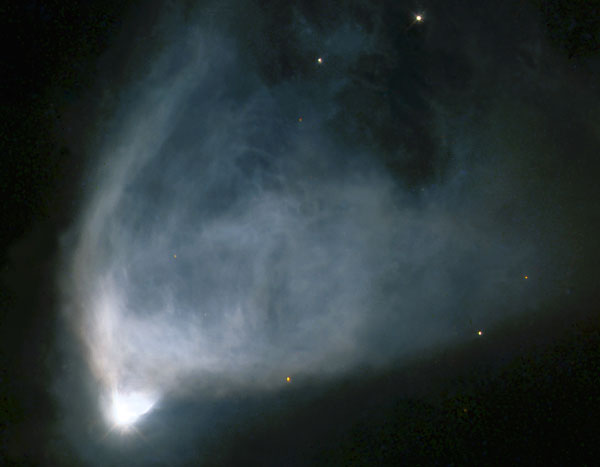
|
Credit: William Sparks (STScI),
Sylvia Baggett (STScI) et al.,
& the Hubble Heritage Team (AURA/ STScI/ NASA)
Explanation:
What causes Hubble's Variable Nebula to vary?
The unusual nebula pictured above
changes its appearance noticeably in just a few weeks.
Discovered over 200 years ago and subsequently
cataloged as NGC 2661,
the remarkable nebula is named for
Edwin Hubble, who
studied it earlier this century.
Hubble's Variable Nebula is a
reflection nebula
made of gas and fine
dust fanning out from the star
R Monocerotis.
The faint nebula is about one
light-year across and lies about 2500
light-years away towards the
constellation of Monocerotis.
A leading
variability explanation for
Hubble's Variable Nebula holds that dense knots
of opaque dust pass close to
R Mon and cast moving shadows onto the
reflecting dust seen in the rest of the nebula.
& the Hubble Heritage Team (AURA/ STScI/ NASA)
|
January February March April May June July August September October November December |
| ||||||||||||||||||||||||||||||||||||||||||||||||
NASA Web Site Statements, Warnings, and Disclaimers
NASA Official: Jay Norris. Specific rights apply.
A service of: LHEA at NASA / GSFC
& Michigan Tech. U.
Based on Astronomy Picture
Of the Day
Publications with keywords: Hubble space telescope - variable - reflection nebula
Publications with words: Hubble space telescope - variable - reflection nebula
See also:
